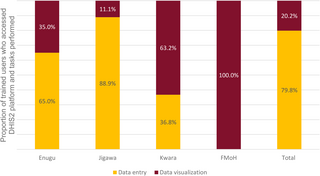Recent research has revealed that elevating levels of the protein PI31 may provide neuroprotective benefits, potentially offering a novel approach to combating neurodegenerative diseases like Parkinson’s and Alzheimer’s. The study, published in the Proceedings of the National Academy of Sciences (PNAS), demonstrates that increased PI31 levels can prevent neuronal degeneration, restore synaptic function, and significantly extend lifespan in models mimicking rare genetic disorders related to Parkinson’s.
Neurodegenerative diseases are characterized by a gradual breakdown in communication between brain cells. This deterioration begins before the actual death of brain cells, stemming from the malfunction of the cellular mechanisms responsible for cleaning up protein waste. As these cleanup processes become impaired, the connections between neurons weaken, disrupting the flow of signals essential for reasoning, memory, language, and basic bodily functions.
Hermann Steller, the director of the Strang Laboratory of Apoptosis and Cancer Biology at Rockefeller University, states, “A number of diseases—Alzheimer’s, Parkinson’s—are in fact diseases of synaptic dysfunction, at least initially.” With the discovery of how to eliminate unwanted proteins at synapses by enhancing PI31 levels, there is hope for a transformative approach to treating prevalent age-related disorders.
For many years, the focus in neurodegenerative research has been on the protein aggregates found in the brains of Alzheimer’s and Parkinson’s patients. The amyloid hypothesis, which suggested that these protein clumps, including beta-amyloid plaques and tau tangles, were the primary cause of cell death, has guided much research. However, as treatments targeting these aggregates have proven ineffective in clinical settings, Steller posits that these clumps may be symptomatic rather than causative of neurodegeneration. “It’s not good to have protein clumps,” he explains, emphasizing that the research indicates aggregates might be the result of the disease’s progression, not the underlying cause.
Steller’s previous research points to the critical role of proteasomes—the cellular machinery that degrades damaged proteins—in preventing neurodegeneration. These proteasomes need to travel from the neuron’s cell body to its synapses to maintain clear communication by removing waste products. A breakdown in this transport system leads to waste accumulation and communication failure among neurons. Steller asserts that simply targeting plaques is not enough; addressing the transport mechanism is key to preventing the buildup of harmful proteins.
In a pivotal 2019 study, Steller identified PI31 as a crucial adaptor protein that aids in the transport of proteasomes to synapses. He discovered that a lack of PI31 results in stalled transport, waste accumulation, and, ultimately, neurodegeneration. Variants of the PI31 gene have since been shown to occur in Alzheimer’s and ALS patients, as well as in individuals diagnosed with Parkinson’s.
To investigate whether boosting PI31 could mitigate neurodegeneration, Steller focused on a rare genetic disorder linked to mutations in the FBXO7 gene, known to induce Parkinson’s-like symptoms in humans. This connection was particularly relevant because loss of FBXO7 leads to decreased levels of PI31.
Using fruit fly models, the research team demonstrated that inactivation of FBXO7 resulted in significant motor defects and disrupted proteasome transport—symptoms akin to Parkinson’s. However, by introducing additional copies of PI31, they were able to alleviate these symptoms, restoring normal proteasome function. Following this success, the team examined FBXO7-deficient mice, discovering that even modest increases in PI31 levels dramatically reduced neuronal degeneration, preserved motor function, and improved overall health. Remarkably, in some instances, the lifespan of these mice was extended nearly fourfold, while PI31 also effectively eliminated abnormal tau proteins associated with Alzheimer’s.
Steller notes, “The degree to which we can rescue the various defects in mice is remarkable.” The next phase of this groundbreaking research will involve testing whether PI31 can help maintain cognitive function in aging mice, with aspirations of eventually developing therapies for human use.
In a related preprint, Steller’s team also discovered that humans with rare PI31 mutations experience diverse neurodegenerative conditions. These revelations suggest that a therapeutic approach targeting PI31 could potentially benefit patients suffering from disorders arising from FBXO7 or PI31 deficiencies. Steller believes that insights gained from treating these unique conditions might eventually provide broader strategies for mitigating cognitive decline due to aging and managing more commonplace diseases such as Alzheimer’s.
“Our findings may potentially, down the road, allow us to slow down cognitive decline as we age,” concludes Steller, echoing the excitement surrounding the implications of their research across various neurodegenerative diseases.






